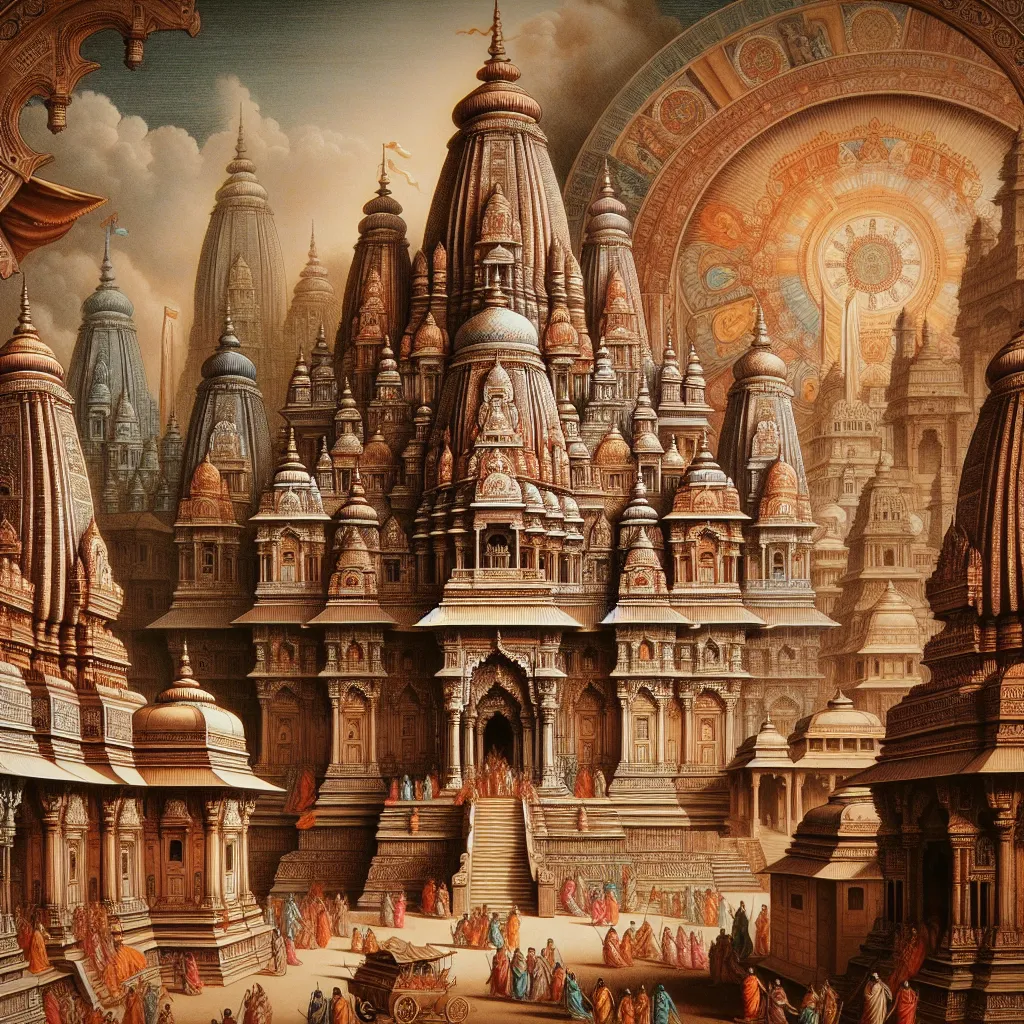
- Published on
- Authors

- Name
- You
The Mystical Symbolism of Hindu Temples: Architecture as a Reflection of the Divine
Introduction
Hindu temples are marvels of architectural excellence, created to be a bridge between the earthly and the divine. Every aspect of a temple, from its towering spires to its intricate carvings, holds profound symbolic meanings, representing the cosmic order and the essence of the universe. This article delves into the intricate symbolism, scientific insights, and mystical wisdom infused within these sacred structures.
Architectural Symbolism
The Mandala: Cosmic Diagram
At the heart of Hindu temple design lies the mandala, a geometric configuration of symbols. This cosmic diagram represents the universe in both its macrocosmic and microcosmic forms, guiding the layout of the temple's floor plan.
| Element | Symbolism |
|---|---|
| Square | Stability, Earth, Four cardinal directions |
| Circle | Infinite, Sky, Divine enclosure |
| Central Axis | Connection between the mundane and divine realms |
Vastu Shastra: The Sacred Architecture Science
The principles of Vastu Shastra, an ancient Hindu system of architecture, govern the temple's spatial geometry.
- Brahmasthan: Central courtyard, representing Brahma, the creator.
- Gopuram: Tower, symbolizing the mythological Mount Meru, the axis of the universe.
- Garbhagriha: Sanctum sanctorum, the innermost chamber housing the deity's idol.
Science & Mysticism: Harmonizing Energy Fields
Recent research reveals that Hindu temples are meticulously designed to harmonize and amplify natural energy fields, a concept resonating with modern understandings of geomancy and biofield sciences.
Geomancy & Energy Vortexes
- Ley Lines: Temples are often situated at junctures of these magnetic lines, purportedly channels of the Earth's energy.
- Pyramidal Structures: The temple's Gopuram serves a similar function to pyramids in amplifying and distributing energy.
Symbolic Geometry
Fractals and Sacred Geometry
The repetitive patterns in temple art are not mere aesthetics but fractal geometries:
| Structure | Fractal Characteristics |
|---|---|
| Ornate Pillars | Recursive decorative patterns, mirroring the infinite nature of divinity |
| Toranas and Domes | Recursive arches symbolizing the heavens and spiritual ascension |
Material and Construction: Reflecting Divinity
The choice of materials in temple construction is also steeped in symbolism, reflecting the five elements (Panchabhootas):
| Element | Material Used | Symbolism |
|---|---|---|
| Earth | Stone | Stability and permanence |
| Water | Sacred water channels (Theerthams) | Purity and cleansing |
| Fire | Lamps and torches | Divine energy and transformation |
| Air | Open spaces and ventilations | Life force and Brahman (the ultimate reality) |
| Space | Sanctum, high ceilings | Boundlessness and spiritual essence |
Conclusion
Hindu temples, with their profound architectural symbolism and scientific harmony, serve as spiritual gateways that echo the cosmos's divinity. They stand as testaments to human ingenuity and the timeless quest for understanding the divine order of the universe.
These intricate sanctuaries invite devotees and scholars alike to explore their depths, offering endless avenues for spiritual enlightenment and scientific wonder. As we decode their mysteries, we bridge the gap between mysticism and science, illustrating the breathtaking synergy between ancient wisdom and modern understanding.
Let us immerse in the mystical and scientific splendor of these architectural wonders, unraveling their secrets to appreciate the divinity they encapsulate.
